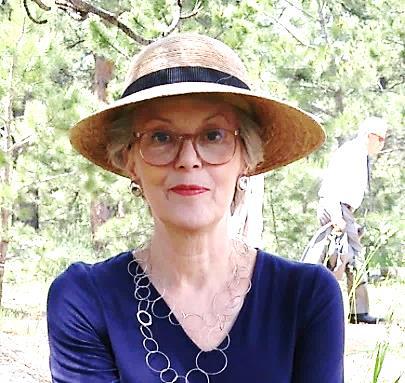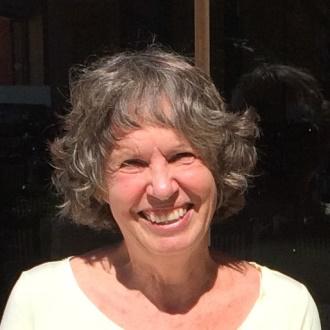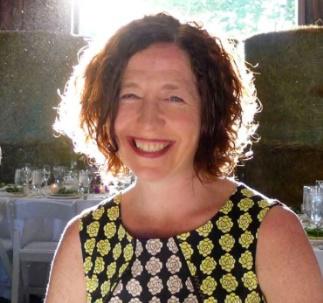Member News: A Review of AIA UK Women Presidents
Fiona Mckay
This article has been written as part of the AIA Newsletter’s commitment to up-to-date member news. If you are aware of UK Chapter members’ involvement in other newsworthy projects or events, please bring them to our attention via a “comment” follow up note at the end of this article and we will endeavour to publish further feature articles.
With the selection of a female Prime Minister in the UK , the increasing number of other female heads of state elsewhere around the world as well as the recent, brave attempt to elect a woman President in the US, there has been an increasing focus on the growing potential for women to assume more and more senior leadership roles worldwide.
List of elected and appointed female heads of state, a recent survey from Wikipedia
Looking closer to home, we can report that the AIA UK Chapter anticipated this leadership trend with women playing a significant role both in creating the Chapter and maintaining it over the past 25 years. Although the UK Chapter was not the first AIA chapter to elect a female leader, it has led the way in the quantity and consistent quality of its past women presidents and board directors. To be fully appreciated, this achievement needs to be put into historical perspective.
Susan A Maxman, FAIA, was AIA National’s 69th President, serving from 1992-1993. According to her official AIA biography:
“Her election was particularly important for the Institute, as it marked the first time a woman had been elected to the national presidency in its 134-year history … Maxman’s election came 103 years after the AIA admitted its first female member, Louise Bethune, FAIA, in 1888.
But, as reflected by Maxman’s own path through the Institute, women held leadership positions at the state and local levels decades before Maxman became national president. Perhaps the first woman to be elected a chapter officer was Henrietta Dozier, who served as secretary of AIA Florida in the early 1920s. Beverly Willis, FAIA, was president of the AIA California Council in 1974.”
What the biography does not readily acknowledge is that Susan presided over the AIA at a time when the representation of women in the profession was extremely low. According to the AIA “Women in Architecture Tool Kit” published in 2013, only 1% of registered architects in 1958 were women. In the late 1970s, the AIA finally began to survey the number of women in leadership roles, but still “the numbers were not encouraging.” By 1988, the percentage had only increased to 4%; by 1999, it had increased to 13.5%.
In the period from 2000 to 2006, the representation of women in the profession finally began to take off. According to the Tool Kit, the AIA’s 2006 survey of architectural firms reported: “Since the late 1990s, the share of women in leadership roles in the profession has continued to grow. Women principals and partners at firms quadrupled from 4% in 1999 to 16% in 2005.”
Although the second woman AIA National President – Katherine Lee Schwennsen, FAIA, who served from 2005-2006 - was not elected until thirteen years after the first, she was followed just seven years later by Helene Combs Dreiling, FAIA, in 2013-4 and in even more rapid succession by Elizabeth Chu Richter, FAIA, in 2014-15.
However, despite the low representation of women in the profession, the primary aim of this current article is not advocacy for more women architects – that must be taken as given – but it is instead a simple celebration of the UK Chapter’s seven women presidents to date who have overcome the statistical odds and gone on to lead the Chapter. How do these women compare to each other; what led them to choose a career in architecture; what distinguishes their careers from others; and what are they doing now?
Pre- 2007 – The Early Phase
There were four AIA UK Chapter women presidents pre-2007 who began their careers during this period of low female representation. Justine Kingham, AIA, was the UK’s 1st woman president in 1997, followed by Lorraine King, AIA, serving in 2002, Elizabeth Casqueiro, AIA, in 2003 and Bea Sennewald, AIA, in 2006. A short review of their histories shows little commonality in their careers. Instead, their determination to succeed and the very diversity of their approaches to the profession typifies this early generation of pioneers.
Justine Kingham’s first degree was in Art History from George Washington University and she worked initially as a writer, editor and graphic designer. “I then realised,” she explains, “that only architecture brought creativity together with reality. I love the problem solving involved in design and its execution.” See here for the full profile.
Lorraine King was originally enticed by the promise that architecture “is where art and science meet”, but she was actively discouraged from an architectural career by her high school counsellor. See here for the full profile.
Elizabeth Casqueiro’s route to London differed significantly from the other past presidents. She obtained a BA in Design at the University Institute of Art, Design and Enterprise, in Lisbon, Portugal in 1975, but she soon realised that – while she loved design - she was passionate about architecture. See here for the full profile.
Bea Sennewald’s first degree was a BS in Physics from Antioch before she decided that architecture potentially offered a more “exciting life style than working in a laboratory”. However, she has never lost her interest in science and continues to include “reading science research” as one of her primary outside interests. See here for the full profile.
Post 2007 - The Second Phase
In 2006, the UK Chapter recorded its female membership as 25% of the total of 149. The total Chapter membership grew slowly to 221 by 2014-15, with the percentage of female membership increasing to 32%. This peak percentage fell slightly in 2016-17, but the percentage continues above the 2006 level and above that of the AIA membership as a whole. By comparison, according to notes from the 2016 AIA Convention panel discussion on the Business Case for Women in Architecture, 25.3% of architects in the US in 2015 were women, yet only 18% of AIA membership.
There have been three AIA UK Chapter women presidents during the period post-2006 when representation of women in the profession began increasing. Elizabeth Waters, AIA, was elected president in 2011, followed by Etain Fitzpatrick, AIA, serving in 2012, and Brianne Hamilton, AIA, in 2015. Whereas the first four presidents had few similarities in their careers, there is more commonality with the later three, particularly on their transition via large architectural firms to London and their more traditional career progressions.
Elizabeth Waters started CAD drafting in high school and, like all the other past presidents, enjoyed both math and art. Initial study for an engineering degree at the University of Kansas was quickly put aside for a BArch (achieved in 2005) once she realised she “wanted more of the creative side of things”. See here for the full profile
Etain Fitzpatrick decided when she was about 12 or 13 that she wanted to be an interior designer, but she also studied calculus, physics and chemistry at high school. When she was applying to university, her mother suggested architecture to her because she was “good at math and was artistic”. See here for the full profile.
Brianne Hamilton also excelled at art and math, so an early guidance councillor made the obvious suggestion that she should look into an architectural career - a sweet twist on advice to previous generations. See here for the full profile.
Follow Up
While not quite so early or as consistent as the UK Chapter, other AIA Chapters have also had women presidents. Our sister chapter, AIA Continental Europe, elected its 1st woman president, Sandra Zettersten, AIA, in 2004. It was 12 years before its 2nd president, Nóra Demeter, Int'l Assoc AIA, was elected in 2016, but she will be quickly followed next year by Tiffany Melancon, Int'l Assoc AIA, The International Region’s 1st president was Christine Bruckner, FAIA, who served in 2014-15.
Although there are similarities between individual past presidents across all the chapters, the only trait that seems to unit them all is an early love of art, science and/or math, and this was always accompanied by a strong commitment to endure and to succeed in a profession with a notoriously high attrition rate.
Each of the past presidents had their share of the many difficulties and vexations generally encountered by women architects. Several raised families and some had to move jobs or interrupt their own career to keep their families together. Others were originally discouraged from studying, were disappointed in promotions, were paid less than male colleagues or were side-tracked along the way.
However, despite such stories, all the past presidents were ultimately more interested in promoting the profession than cataloguing any complaints. Sandra Zettersen’s closing comment identifies the positive value that women’s leadership and participation can bring: “2015 was the first time that over 50% of the board of the Continental Europe Chapter were women”. In her opinion “in that year, we accomplished more towards completing our stated chapter goals than we had in many of the previous years added together. Women are good decision makers and not only understand the necessity of making good decisions but in handling them immediately and getting them into action…”
The UK Chapter currently has several young female board members or participants with the potential to be future leaders. All the past presidents have offered them their support and encouragement and look forward to their successes.
Written by: Lorraine King AIA








